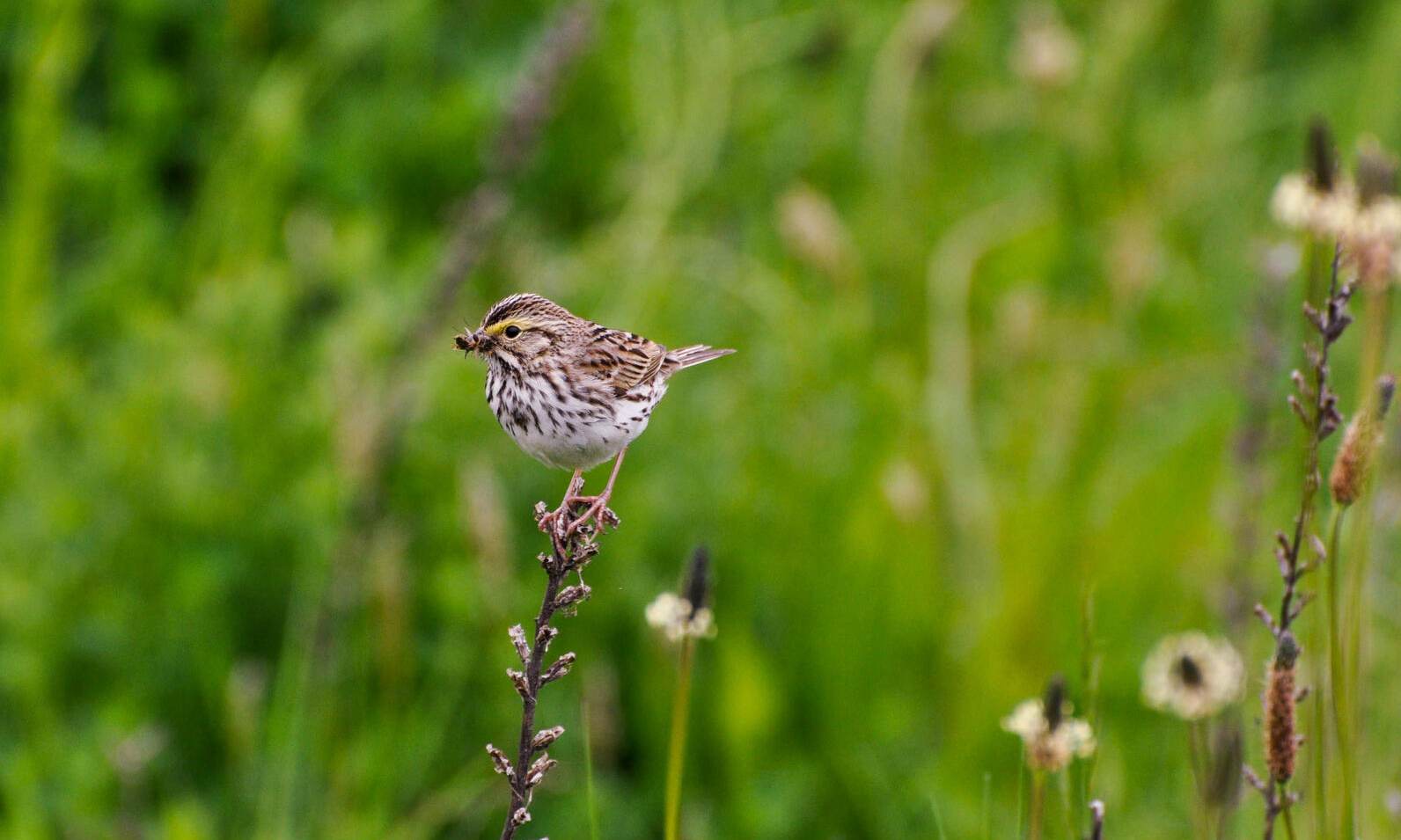Can Birds and Livestock Coexist? Rotational Grazing and other Bird Friendly Farming Techniques
Aug. 23rd 2024Typically, when we think about conserving bird habitat, we think of huge swaths of forest and untouched nature away from civilization. But what if we told you a critical habitat for some of Vermont’s most beloved bird species was farms? Grassland birds and farms can not only live in harmony, but can actually have a co-beneficial relationship.
Land uses for livestock vary drastically and so do their impacts on birds. Audubon Vermont is focusing on several strategies, including certain approaches to grazing, in which agricultural and conservation objectives are compatible. In fact—grassland bird habitat may actually depend on grass-fed cows to maintain an open landscape that would otherwise be lost.
Diverse groups of birds provide balance by reducing populations of potentially harmful pest insects like caterpillars, weevils, cutworms, beetles, and flies that can negatively impact crop yields and the health and welfare of livestock animals. At the same time, grassland birds, especially in the northeast, depend on human-altered agricultural landscapes where their preferred grassland habitats are actively maintained as open, grass-dominant vegetation.Grassland bird habitat is decreasing across the country, and Vermont, with the transition of pasture or hayfields into other crops or land use types as well as the overall intensification of agricultural practices.
In general, good pasture management to maintain soil health and forage diversity, nutrition, and production with ample rest and regrowth, is also good for many bird species. Sustainable grazing practices that enable long-term viability of grasslands with adequate maintenance of vegetative structure and adequate periods of rest without disturbance, can provide birds with essential breeding, shelter, and forage requirements.
With a variety of grassland bird species comes a variety of habitat, feeding, and nesting needs, so not all species are likely to occur on one farm, but there are some general concepts to be familiar with when encouraging most grassland birds.
Rotational Grazing
This past year, Audubon collaborated with Organic Valley to learn more about dairy farm operations to better inform our Bird-friendly Farming, Bobolink Project, and certified Conservation Ranching programs and beyond. Fencing in pasture systems can provide favorable conditions for birds with posts serving as ideal singing perches and electric fencing potentially reducing predation by raccoons, skunks, foxes, and coyotes.
More importantly, we’re starting to understand that grass-fed pastured livestock operations in particular that use intensive rotational grazing systems can maintain production and forage quality for their animals while simultaneously providing significant habitat for grassland birds. Generally, rotational grazing is a method where pastures are subdivided into many smaller areas (referred to as paddocks), only a small strip is grazed at a time while the remainder of the pasture “rests” and the herd is moved very frequently.
In contrast, continuous grazing gives cows access to the whole area for long periods. There are advantages and disadvantages of each method for practical, economic, and ecological reasons. However, it’s important to note that we’re finding the time cows have access to an area to graze has a larger impact on birds and habitat quality than animal stocking density and area size.
Initial costs for rotational grazing systems do tend to be higher for fencing and water distribution supplies for each paddock and this method requires more hands-on management and careful monitoring of forage supply, but there is a long list of benefits to farm productivity, livestock, and birds alike. This system allows for the optimum rest and recovery time of forage species and will provide the highest quality pasture for livestock based on energy, protein, palatability, and digestibility.
Other benefits of intensive rotational grazing include weed control, increased grass productivity, even manure nutrient distribution, and more livestock on less land due to increased land use efficiency. In addition to bird diversity, intensively rotated pastures support several times the abundance of grassland birds compared to continuous grazing or even simple rotation (still uses paddocks, but fewer, larger, and less frequently rotated), both of which may create large areas lacking diversity in vegetation structure. Below are some examples of small adjustments and actions that may be considered for livestock grazers for grassland birds if they are within the means of farm operations.
Other bird-friendly practices
These methods may be more accessible to organic farmers who can receive a higher premium for their milk and meat. The higher cost of operations and land space needed for organic farming benefits the environment and livestock, but gets passed on to the consumer with more expensive dairy and meat products.
There is a growing awareness and interest in the value that biodiversity brings to farms and many are working hard to think about ways to incorporate those values in a sustainable economic model. There is great power in small actions by individual landowners that can have a global impact on bird conservation when vulnerable species have the opportunity to reproduce successfully in their preferred habitats.
Overall, rotational grazing has the potential to be a system that supports ground-nesting grassland birds while benefiting livestock. Audubon Vermont’s Bird & Bee Friendly Farming Program will continue working with farmers and partners to find a balanced approach to support farms and wildlife.
 ecoNEWS VT
ecoNEWS VT